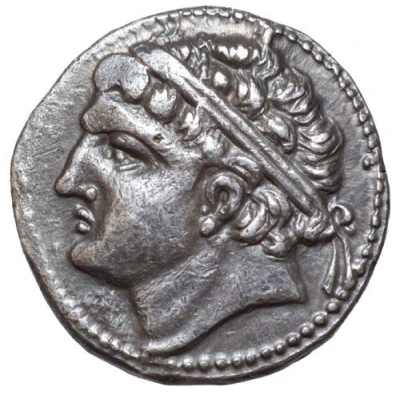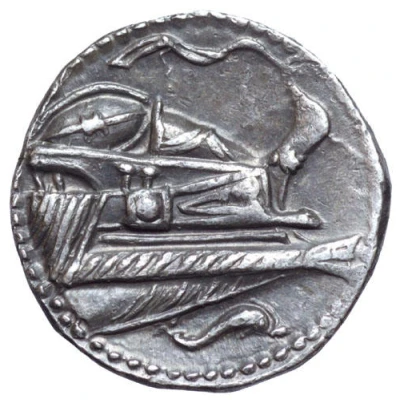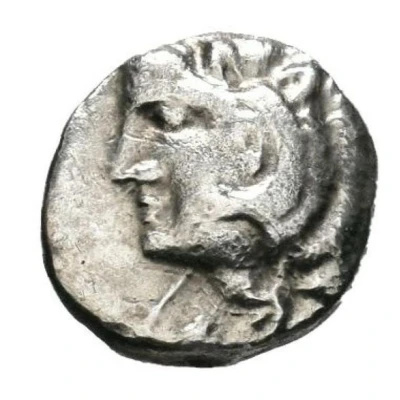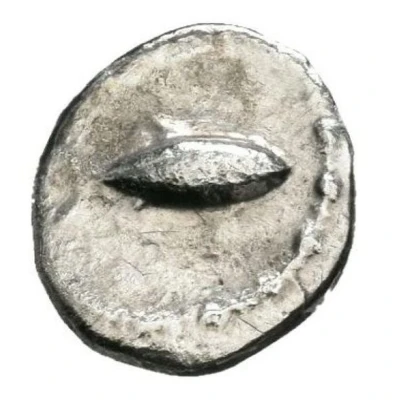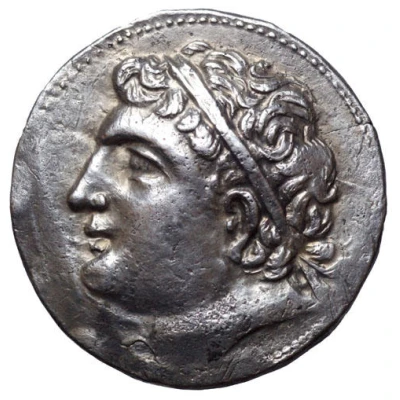
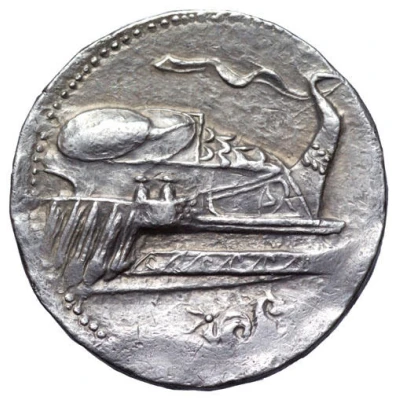

2 Shekel - Hamilcar Barca 237 BC - 228 BC
| Silver | 14.72 g | 27 mm |
| Issuer | Gadir (Punic Iberia) |
|---|---|
| Type | Standard circulation coin |
| Years | 237 BC - 228 BC |
| Value | 2 Shekel |
| Currency | Drachm |
| Composition | Silver |
| Weight | 14.72 g |
| Diameter | 27 mm |
| Shape | Round (irregular) |
| Technique | Hammered |
| Demonetized | Yes |
| Updated | 2024-10-09 |
| Numista | N#196718 |
|---|---|
| Rarity index | 100% |
Reverse
Prow of galley to right, with rostra, oars, two shields on deck and a wreathed forepost, to which is attached a pennant; hippocampus in exergue.
Comment
MHC, Class II, 14; AB 481.
The obverse of this coinage is popularly believed to depict Hamilcar Barca (or depict his features assimilated into Herakles-Melqart), who had after 247 commanded Carthage's fleet and army in the Sicilian theatre of the First Punic War. The reverse of this type clearly alludes to the Carthaginian tradition of being a primarily naval power, and probably more specifically, to a renewed strengthening of the fleet, which had been so devasatated in the war - according to Polybius' estimates, Carthage had lost 500 ships and he commented that the war was, at the time, the most destructive in terms of casualties in the history of warfare, including the battles of Alexander the Great.
Interesting fact
The Hamilcar Barca coin is notable for its unique design, which features a portrait of Hamilcar Barca, a prominent Carthaginian general and statesman, on one side, and a depiction of a lion attacking a horse on the other. This design is significant because it reflects the cultural exchange and influence of the Carthaginian Empire in the region, as well as the importance of Hamilcar Barca in Carthaginian history. Additionally, the use of silver in the coin's minting process was a significant technological achievement for its time, as it required a high level of metallurgical skill to produce.
